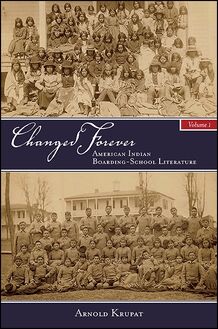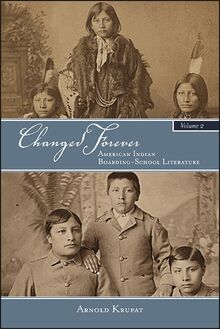-
 Univers
Univers
-
 Ebooks
Ebooks
-
 Livres audio
Livres audio
-
 Presse
Presse
-
 Podcasts
Podcasts
-
 BD
BD
-
 Documents
Documents
-
- Cours
- Révisions
- Ressources pédagogiques
- Sciences de l’éducation
- Manuels scolaires
- Langues
- Travaux de classe
- Annales de BEP
- Etudes supérieures
- Maternelle et primaire
- Fiches de lecture
- Orientation scolaire
- Méthodologie
- Corrigés de devoir
- Annales d’examens et concours
- Annales du bac
- Annales du brevet
- Rapports de stage
La lecture à portée de main
Vous pourrez modifier la taille du texte de cet ouvrage
Découvre YouScribe en t'inscrivant gratuitement
Je m'inscrisDécouvre YouScribe en t'inscrivant gratuitement
Je m'inscrisEn savoir plus
Vous pourrez modifier la taille du texte de cet ouvrage
En savoir plus

Description
List of Illustrations
Acknowledgments
Introduction
Part I. Hopi Boarding-School Autobiographies
1. Edmund Nequatewa’s Born a Chief
2. Albert Yava’s Big Falling Snow
3. Don Talayesva’s Sun Chief
4. Polingaysi Qoyawayma’s No Turning Back
5. Helen Sekaquaptewa’s Me and Mine
6. Fred Kabotie’s Hopi Indian Artist
Part II. Navajo Boarding-School Autobiographies
7. Frank Mitchell’s Navajo Blessingway Singer
8. Irene Stewart’s A Voice in Her Tribe
9. Kay Bennett’s Kaibah
10. Stories of Traditional Navajo Life and Culture
11. George P. Lee’s Silent Courage
Appendix A The Orayvi Split
Appendix B The Navajo Autobiographical Canon
Appendix C Apache Boarding-School Autobiographies
Notes
Works Cited
Index
Sujets
Informations
| Publié par | State University of New York Press |
| Date de parution | 20 mars 2018 |
| Nombre de lectures | 5 |
| EAN13 | 9781438469164 |
| Langue | English |
| Poids de l'ouvrage | 3 Mo |
Informations légales : prix de location à la page 0,1698€. Cette information est donnée uniquement à titre indicatif conformément à la législation en vigueur.
Extrait
C HANGED F OREVER
Volume 1
SUNY series, Native Traces
Jace Weaver and Scott Richard Lyons, editors
Changed Forever
Volume I
A MERICAN I NDIAN B OARDING -S CHOOL L ITERATURE
Arnold Krupat
On the cover: Apache students on their arrival at Carlisle Indian School in 1886 and three years after, both photographs taken by John N. Choate. Courtesy of the National Anthropological Archives.
Published by State University of New York Press, Albany
© 2018 State University of New York
All rights reserved
Printed in the United States of America
No part of this book may be used or reproduced in any manner whatsoever without written permission. No part of this book may be stored in a retrieval system or transmitted in any form or by any means including electronic, electrostatic, magnetic tape, mechanical, photocopying, recording, or otherwise without the prior permission in writing of the publisher.
For information, contact State University of New York Press, Albany, NY
www.sunypress.edu
Library of Congress Cataloging-in-Publication Data
Names: Krupat, Arnold, author.
Title: Changed forever : American Indian boarding school literature. Volume I / Arnold Krupat. Other titles: American Indian boarding school literature
Description: Albany, NY : State University of New York Press, [2018] | Series: SUNY series, Native traces | Includes bibliographical references and index.
Identifiers: LCCN 2017022009 (print) | LCCN 2018005523 (ebook) | ISBN 9781438469164 (e-book) | ISBN 9781438469157 (hardcover : alk. paper)
Subjects: LCSH: Off-reservation boarding schools—United States—Biography. | Boarding school students—United States—Biography. | Indian students—United States—Biography. | Hopi Indians—Biography. | Navajo Indians—Biography. | Apache Indians—Biography. | Autobiographies—Indian authors.
Classification: LCC E97.5 (ebook) | LCC E97.5.K78 2018 (print) | DDC 371.829/97—dc23
LC record available at https://lccn.loc.gov/2017022009
10 9 8 7 6 5 4 3 2 1
For Julian Rice
“ What has become of the thousands of Indian voices who spoke the breath of boarding-school life? ”
—K. Tsianina Lomawaima
“ We still know relatively little about how Indian school children themselves saw things. ”
—Michael Coleman
“ Boarding-school narratives have a significant place in the American Indian literary tradition. ”
—Amelia Katanski
CONTENTS
List of Illustrations
Acknowledgments
Introduction
PART I H OPI B OARDING -S CHOOL A UTOBIOGRAPHIES
1 Edmund Nequatewa’s Born a Chief
2 Albert Yava’s Big Falling Snow
3 Don Talayesva’s Sun Chief
4 Polingaysi Qoyawayma’s No Turning Back
5 Helen Sekaquaptewa’s Me and Mine
6 Fred Kabotie’s Hopi Indian Artist
PART II N AVAJO B OARDING -S CHOOL A UTOBIOGRAPHIES
7 Frank Mitchell’s Navajo Blessingway Singer
8 Irene Stewart’s A Voice in Her Tribe
9 Kay Bennett’s Kaibah
10 Stories of Traditional Navajo Life and Culture
11 George P. Lee’s Silent Courage
Appendix A The Orayvi Split
Appendix B The Navajo Autobiographical Canon
Appendix C Apache Boarding-School Autobiographies
Notes
Works Cited
Index
ILLUSTRATIONS
1 Captain Richard Pratt with newly arrived Navajo students at Carlisle
2 Boys’ dormitory at the Albuquerque Indian School
3 Little girls praying at the Phoenix Indian School
4 Edmund Nequatewa and his wife, June
5 Tewa Village or Hano on First Mesa
6 Albert Yava
7 Polingaysi Qoyawayma
8 Fred Kabotie
9 Fred Kabotie and Eleanor Roosevelt
10 Kay Bennett at the American Indian Miss America contest
11 John Collier and two Native men
12 Hoke Denetsosie
13 Daklugie with other Carlisle students
14 Apache students on their arrival at Carlisle
15 Apache students three years after their arrival at Carlisle
ACKNOWLEDGMENTS
MANY PEOPLE HAVE ENCOURAGED AND HELPED ME THROUGHOUT MY WORK on this book, and it is a pleasure to thank them. Professors Scott Lyons and Jace Weaver, editors of the Native Traces Series at the SUNY Press, supported this project from its earliest stages and offered useful suggestions until the latest stages, and I thank them both. Scott invited me to participate in two seminars at the University of Michigan for which I am grateful, and my gratitude extends to his students and colleagues for their responses. Dr. Peter Whiteley of the American Museum of Natural History read early drafts of a couple of the Hopi sections of this book, corrected many errors large and small, and generously offered the benefits of his enormous erudition on all things Hopi. Occasional email exchanges with Professor Paul John Eakin and Dr. Julian Rice were consistently illuminating and encouraging, and I thank both of them. Geoff Danisher of the Sarah Lawrence College Library obtained a great many interlibrary-loan materials for me. I would, in this as in former projects, have been lost without his help. Mika Kennedy of the University of Michigan provided valuable information regarding illustrations, and Jean Hofheimer Bennett enhanced my meager computer skills. Two anonymous readers for the SUNY Press offered useful suggestions for revision for which I am grateful, and I am grateful, too, for the work of my editor, Amanda Lanne-Camilli. An earlier version of the study of Edmund Nequatewa’s Born a Chief appeared in the journal, a/b:autobiography studies , and I thank the editors for permission to reprint.
INTRODUCTION
FROM THE FIRST MOMENTS THEY SET FOOT ON THESE SHORES, THE European invader-settlers of America confronted an “Indian problem.” This consisted of the simple fact that Indians occupied lands the newcomers wanted for themselves. To be sure, this was not the case for the Spanish invaders of the Southeast and Southwest in the mid-sixteenth century, whose intent for the most part was to find treasure and to convert and missionize the tribal peoples they encountered. But in the Northeast, the English, from the early seventeenth century, and then the Americans, as they made their way across the continent, came to understand that, broadly speaking, America’s Indian problem permitted of only two solutions, extermination or education. Extermination was costly, sometimes dangerous, and, too, it also seemed increasingly wrong .
In time, it began to appear wiser, as the title of Robert Trennert’s “Introduction” to a study of the Phoenix Indian School put the matter, for policymakers to proceed according to the assumption that “The Sword Will Give Way to the Spelling Book” (1988, 3), thus offering, again to cite Trennert, an “Alternative to Extinction” (1975). Educating Native peoples—teaching them to speak, read, and write English, to convert to one or another version of Christianity, and to accept an individualism destructive of communal tribalism, ethnocide rather than genocide—was a strategy that might more efficiently free up Native landholdings and transform the American Indian into an Indian-American, inhabiting, if not quite melted into, the broad pot of the American mainstream.
In a fine 1969 study, Brewton Berry remarked that so far as the choice between “coercion” and “persuasion” (23) was concerned, “Formal education has been regarded as the most effective means of bringing about assimilation” (22). Robert Trennert writes that when the Phoenix Indian School was founded in 1891, it was “for the specific purpose of preparing Native American children for assimilation. … to remove Indian youngsters from their traditional environment, obliterate their cultural heritage, and replace that … with the values of white middle-class America.” Complicating the matter, he adds, was the fact that “the definition of assimilation was repeatedly revised between 1890 and 1930” (1988, xi). Further complicating the matter well into the 1960s was the fact that “white middle-class America” was generally not willing to accommodate persons of color regardless of whether they shared its values or not.
In the Annual Report of the Commissioner of Indian Affairs for 1890, the “Rules for Indian Schools” stated clearly that the government, in “organizing this system of schools,” intended for them to “be preparatory and temporary; that eventually they will become unnecessary, and a full and free entrance be obtained for Indians into the public school system of the country. It is to this end,” the “Rules” continued, that “all officers and employees of the Indian school service should work” (in Bremner, vol. ii, 1,354). Although a “full and free entrance” to all public schools in the United States was legally available to Native Americans—as it was not to African Americans—on those occasions when they availed themselves of the right to attend, they were not especially welcomed or well served. Indeed, as Wilbert Ahern has written, “The local public schools to which 53% of Indian children went in 1925, were even less responsive to Indian communities than the BIA schools” (1996, 88).
In her study of the St. Joseph’s boarding school in Kashena, Wisconsin, Sarah Shillinger affirms that “Assimilation was an important, if not a more important goal than education to the supporters of the boarding-school movement”
-
 Univers
Univers
-
 Ebooks
Ebooks
-
 Livres audio
Livres audio
-
 Presse
Presse
-
 Podcasts
Podcasts
-
 BD
BD
-
 Documents
Documents
-
Jeunesse
-
Littérature
-
Ressources professionnelles
-
Santé et bien-être
-
Savoirs
-
Education
-
Loisirs et hobbies
-
Art, musique et cinéma
-
Actualité et débat de société
-
Jeunesse
-
Littérature
-
Ressources professionnelles
-
Santé et bien-être
-
Savoirs
-
Education
-
Loisirs et hobbies
-
Art, musique et cinéma
-
Actualité et débat de société
-
Actualités
-
Lifestyle
-
Presse jeunesse
-
Presse professionnelle
-
Pratique
-
Presse sportive
-
Presse internationale
-
Culture & Médias
-
Action et Aventures
-
Science-fiction et Fantasy
-
Société
-
Jeunesse
-
Littérature
-
Ressources professionnelles
-
Santé et bien-être
-
Savoirs
-
Education
-
Loisirs et hobbies
-
Art, musique et cinéma
-
Actualité et débat de société
- Cours
- Révisions
- Ressources pédagogiques
- Sciences de l’éducation
- Manuels scolaires
- Langues
- Travaux de classe
- Annales de BEP
- Etudes supérieures
- Maternelle et primaire
- Fiches de lecture
- Orientation scolaire
- Méthodologie
- Corrigés de devoir
- Annales d’examens et concours
- Annales du bac
- Annales du brevet
- Rapports de stage







